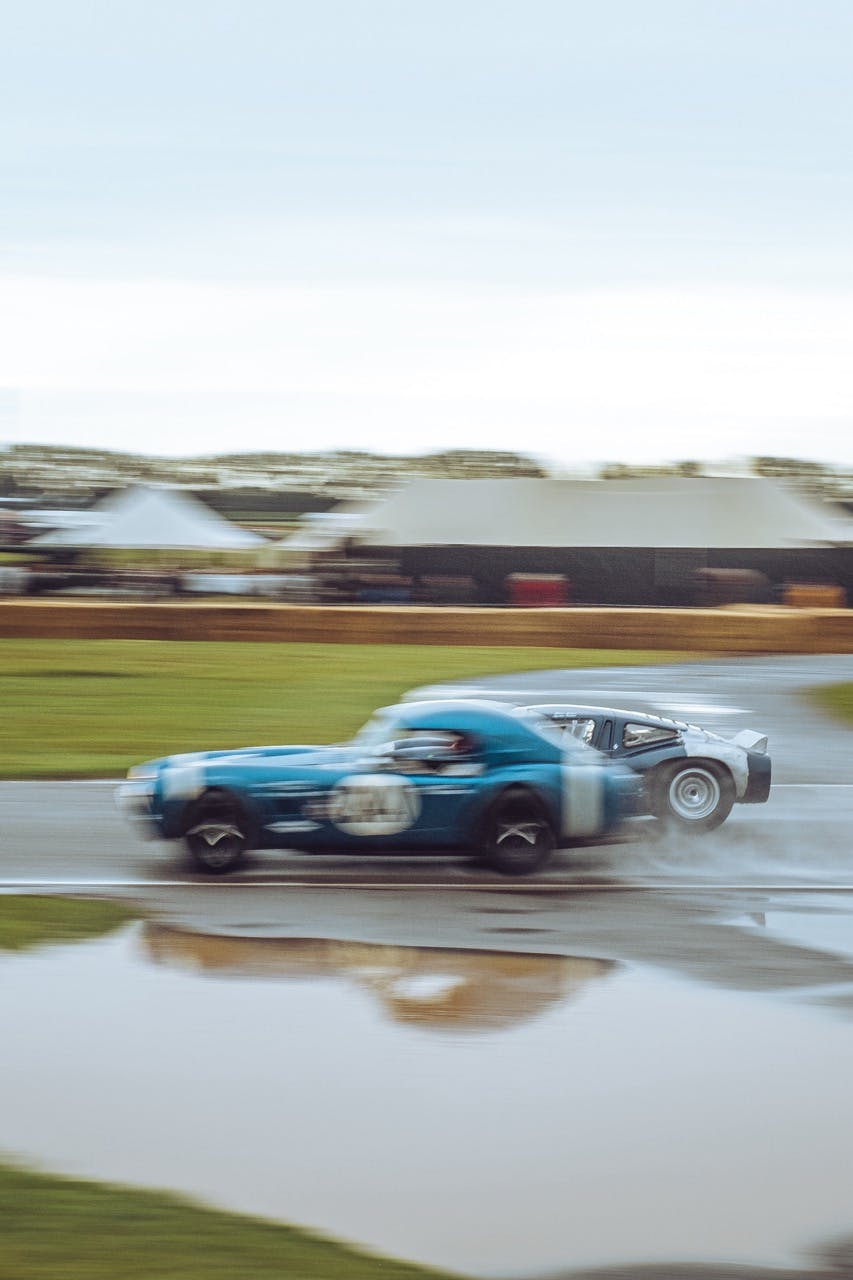Heavy Rain Couldn’t Dampen the Charm and Racing of the Goodwood Revival
Six days before the start of the 2024 edition of the Goodwood Revival, the Duke of Richmond released a video. Intended for the eyes of the competitors, it was uploaded to Goodwood’s official YouTube channel and within hours was being shared and discussed in hundreds of online groups. In the video, The Duke made a very clear statement: Anyone breaking the rules of what he described as “technical eligibility” would be asked to leave on the spot, and maybe never invited back.

Whether it was an unfeasibly fast practice session, a concerned safety inspector’s report, or something else that triggered The Duke into action so close to the start of racing is not clear, but his message was. For years now, there’s been an acceptance that old racing cars are running faster than they ever did in period. Modern tires and lubricants, 21st-century manufacturing tolerances, and computer-led engine development can combine to extraordinary effect, but The Duke was hinting at something more: the use of parts and materials that would not have been available when the car raced. Historic racing has become big business and, as I have written in the past, the outcome for successful cars can be financially rewarding for their owners. But this was Goodwood saying enough is enough.
The Duke needn’t have been too concerned, as the other main talking point of the 2024 Revival put paid to any record-breaking laps of the track. The weather had already been poor on the week preceding the meeting and the competitors’ campsite field turned to mud by the time the traditional cricket match was called off on the Thursday night, but the real rain didn’t arrive until Friday. It was epic, and quickly caused pools to form in some of the trickiest parts of the circuit. Skinny tires, standing water and clouds of spray led to practice for the Fordwater Trophy (sports and GT cars that raced between 1955 and 1960) looking like it was being conducted on an ice-skating rink, and there were so many offs that after the session, a street sweeper had to be driven onto the track to clear the mud. The other sessions were equally as eventful, to the delight of the crowd, with the exception of the motorcyclists in the Barry Sheene Memorial Trophy who, very much against their nature, took it carefully indeed.




The “real” racing takes part on Saturday and Sunday, and although the weather had improved, there were still showers to keep the track slippery. Highlights were the awesome battle between the nimble Alfa Romeo GTA of Frank Stippler and the massive Plymouth Barracuda of Jake Hill in the St Mary’s Trophy. In the RAC TT celebration, it was Hill, this time driving a Shelby Cobra, and Tom Ingram driving a TVR Griffith 400 battling it out on Sunday. That latter battle, often interrupted by Alex Brundle in the famous “CUT7” E-Type, had the crowd on their feet. The track had dried enough for the motorcycles to put in a photo finish, too, with Michael Rutter taking the flag on his Norton Velocette MSS by just 0.072 seconds: Let nobody tell you that historic racing isn’t competitive. Sadly, there wasn’t too much on track for the prewar enthusiast—just the 20-minute Goodwood Trophy race. Given the 100th anniversaries of both MG and the Bugatti Type 35, this seemed like a strange omission. Most importantly though, although the weather caused more off-track action than we’ve seen here in years, there were no serious injuries reported through the three days.




Although the weather may have been bad, the spectators didn’t seem to mind. The usual array of tweed jackets, polka-dot dresses, and period uniforms were apparent on the outfield, just paired with an umbrella and wellies. There was a lot to see, too: Ken Tyrrell’s shed, recently moved from its original home of Ockham in Surrey, a huge group of military vehicles to mark the 80th anniversary of D-Day back in June, and a vast collection of Meyers Manx and VW beach buggies celebrating the life of Bruce Meyers. Next to the tunnel, the National Motor Museum ran Bluebird, the 350-hp Sunbeam land-speed record car, to the delight of onlookers. Adjacent to the track, the funfare continued as usual.


The weather may not have been kind, but people will remember this as an exciting Revival meeting. The Duke in his video was right—for the vast majority of the watching public, the racing isn’t actually that important, in the sense that who wins or loses is irrelevant. People come to experience the whole spectacle, to see ex-F1 drivers and Isle of Man TT winners, BTCC champions, and gentleman racers going head-to-head, to experience the sound and sight of cars that puts them in their proper context, not behind catch fences and acres of run-off gravel. The history, the pageantry, and the authenticity of the cars, that is what makes the Goodwood Revival different, and cars driving slower than usual on a very slippery track didn’t take any of that away. Maybe The Duke should consider installing a sprinkler system for next year. . . .















Good on the Duke. History, authenticity and performance limits ensure the legacy qualities of the events. The gentleman is providing the leadership needed to keep it real.
I would agree with him. I would not want resto-mods with modern everything except the body pretending to be a car from in period.